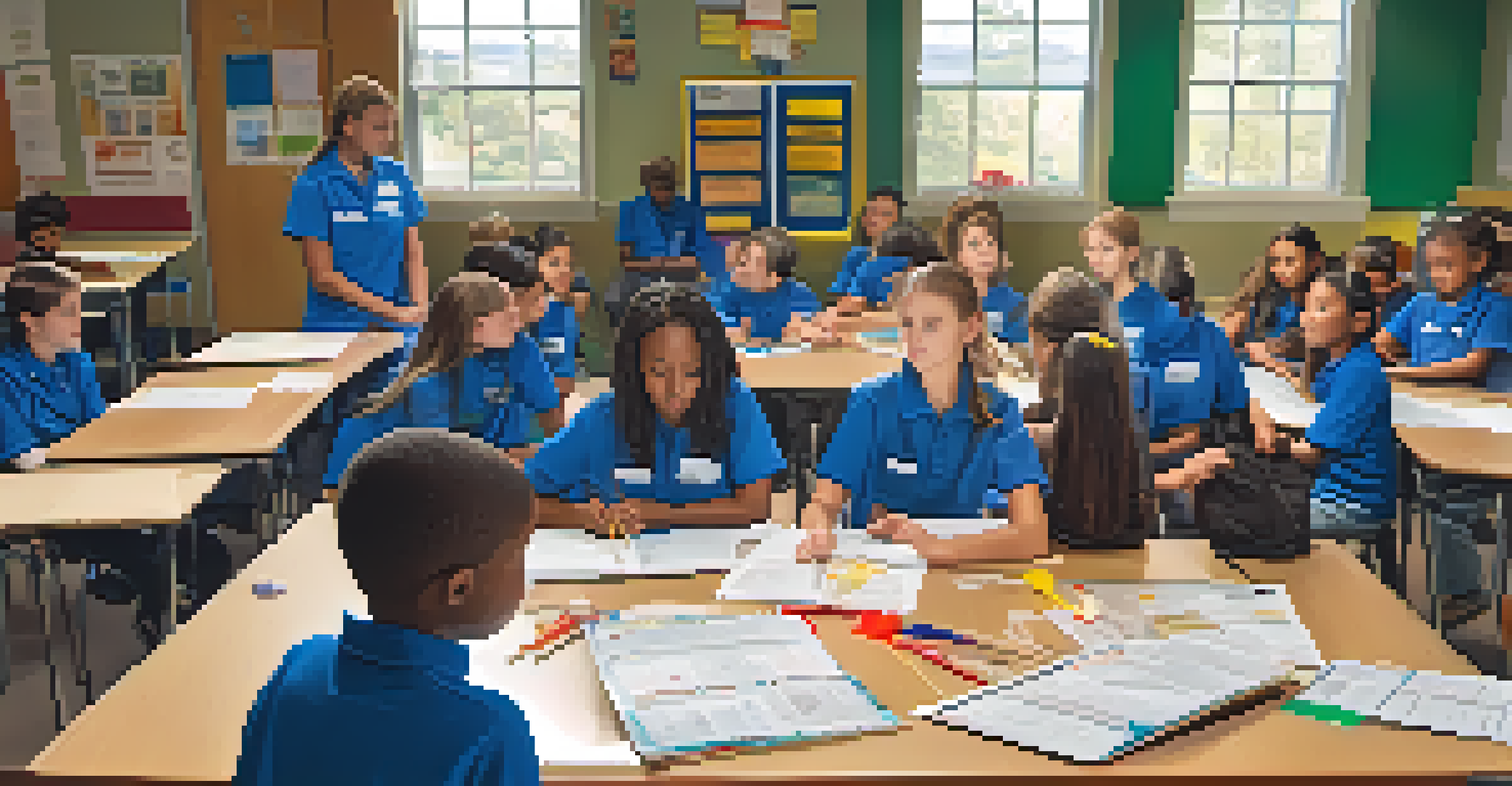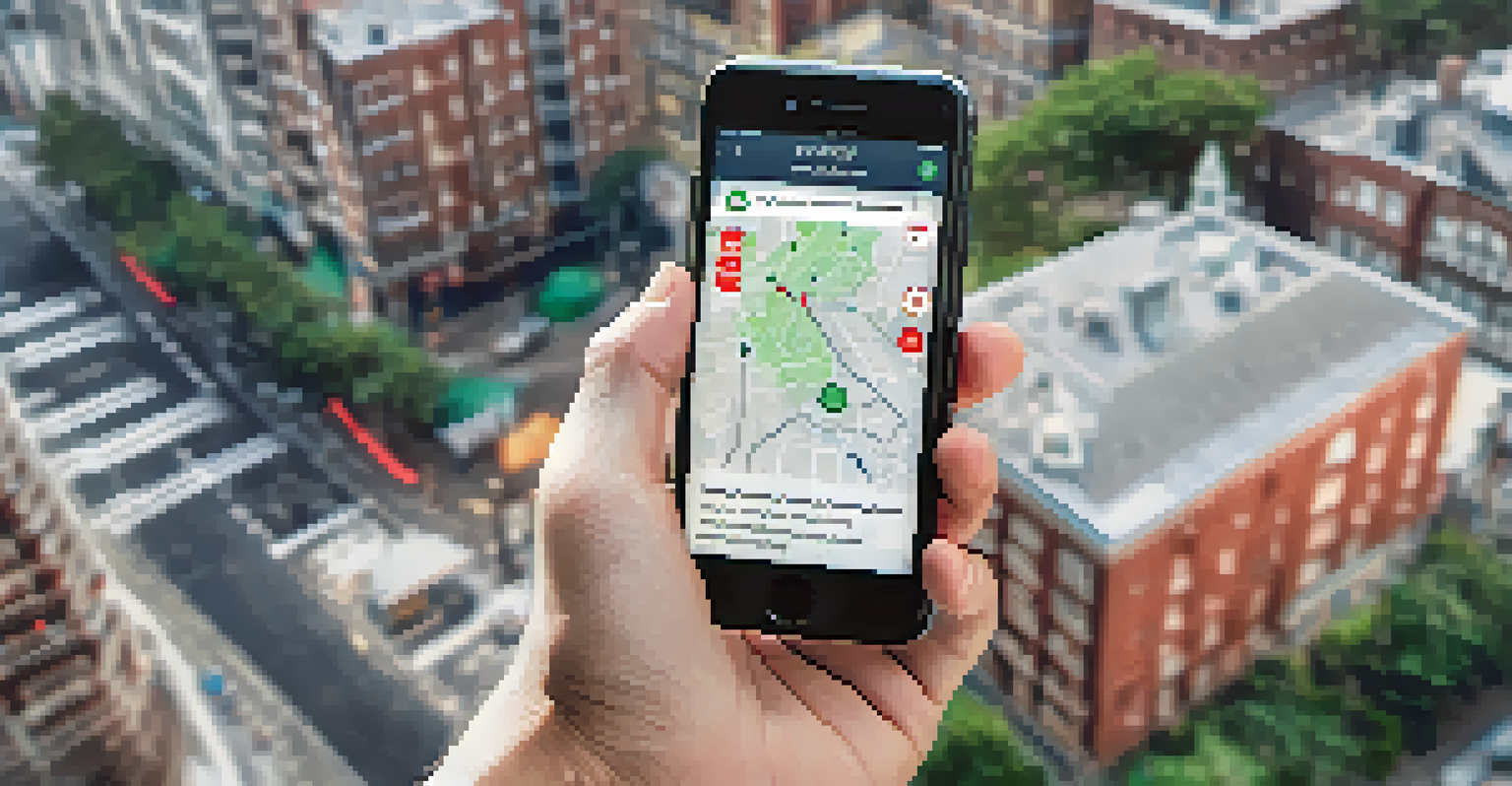The Importance of Disaster Drills for NYC Residents

Why Disaster Preparedness Matters for NYC Residents
Living in a bustling city like New York comes with its fair share of risks, from natural disasters like hurricanes to human-made emergencies. Being prepared can make a significant difference in how well you and your loved ones respond in such situations. Disaster preparedness isn't just about having a plan; it's about fostering a mindset that prioritizes safety and readiness.
By failing to prepare, you are preparing to fail.
New York City's unique geography and dense population mean that emergencies can escalate quickly. Having a solid understanding of what to do in a crisis can help prevent panic and chaos. By participating in disaster drills, residents can feel more equipped to handle unexpected events, ensuring a smoother response when it matters most.
Moreover, these drills serve to strengthen community bonds as neighbors come together to share knowledge and resources. When people are familiar with emergency procedures, it creates a supportive environment where everyone feels more secure, knowing that they are not alone in facing potential disasters.
Types of Disasters NYC Residents Should Prepare For
New York City faces a variety of potential disasters, and each requires a specific response plan. Natural disasters like hurricanes and blizzards are frequent concerns, while man-made emergencies, such as terrorist attacks or building fires, also pose risks. Knowing what types of disasters are most likely to affect your area can help you tailor your preparedness efforts effectively.

For instance, during hurricane season, having an evacuation plan and emergency supplies is crucial. Conversely, for a fire, knowing the building's escape routes could save lives. By understanding the different scenarios that could arise, residents can engage more meaningfully in disaster drills and discussions.
Community is Key to Preparedness
Engaging with neighbors in disaster drills fosters a supportive network that enhances overall safety and response during emergencies.
Additionally, practicing for less common disasters, like power outages or water main breaks, equips residents with the skills to handle various situations. This versatility ensures that everyone is prepared, regardless of the disaster type that strikes.
The Role of Community in Disaster Preparedness
Community plays a vital role in effective disaster preparedness. When residents come together to participate in drills, they create a network of support that can be invaluable during an emergency. Sharing knowledge, resources, and strategies fosters a sense of unity and collective responsibility toward safety.
The time to repair the roof is when the sun is shining.
Moreover, engaging with neighbors can help identify specific vulnerabilities within a community, such as elderly residents who may need additional assistance. By collaboratively addressing these concerns, communities can develop tailored plans that take everyone's needs into account, enhancing overall preparedness.
Community-driven drills also allow for better communication and coordination during actual emergencies. When residents know each other and practice together, it can lead to quicker and more efficient responses, ultimately saving lives and minimizing chaos.
How Disaster Drills Enhance Personal Confidence
One of the most significant benefits of participating in disaster drills is the boost in personal confidence. When individuals know what to do in case of an emergency, they are less likely to panic and more likely to take effective action. This calmness can be contagious, helping to keep others focused and safe as well.
Imagine being in a crowded subway station during an emergency. If you've practiced evacuation routes and emergency protocols, you're much more likely to help guide others, rather than freeze in fear. This sense of preparedness transforms individuals from passive bystanders into proactive participants in their safety.
Regular Drills Build Confidence
Frequent practice in disaster drills boosts individual confidence, enabling more effective responses in real emergencies.
Additionally, personal confidence gained through drills can extend beyond emergencies. It encourages a proactive attitude in everyday life, making individuals more likely to plan for various situations, both big and small.
The Importance of Frequent Practice and Drills
Just like any skill, the effectiveness of emergency preparedness improves with practice. Regular participation in disaster drills helps residents to retain crucial information and refine their response strategies. This repetition ensures that everyone knows what to do and can respond swiftly and effectively in times of crisis.
Moreover, as conditions and technologies change, so too must our emergency plans. Frequent drills provide opportunities to update and adapt strategies based on new information, potential threats, and lessons learned from past incidents. This adaptability is key to maintaining a robust disaster response.
Incorporating a variety of scenarios into drills can also keep residents engaged and informed. By simulating different types of emergencies, individuals will be better prepared to think on their feet and respond appropriately when faced with real-life situations.
Engaging Schools and Workplaces in Disaster Drills
Disaster preparedness shouldn't just be a home affair; schools and workplaces play a crucial role too. By incorporating disaster drills into the curriculum or workplace training, communities can ensure that everyone is equipped with the knowledge and skills needed to respond effectively in emergencies. This is especially important in a city like New York, where schools and workplaces are densely populated.
When students and employees participate in drills, they not only learn important safety procedures but also foster a culture of preparedness. This shared commitment to safety can lead to more effective responses during actual emergencies, as everyone is on the same page about what to do.
Technology Enhances Readiness
Leveraging technology, such as apps and virtual simulations, can significantly improve communication and preparedness for disasters.
Furthermore, involving schools and workplaces in disaster drills creates a sense of responsibility among participants. Employees may feel more empowered to take an active role in emergency planning, while students learn the importance of community and collaboration in ensuring safety.
Leveraging Technology to Enhance Disaster Preparedness
In today's digital age, technology can play a significant role in enhancing disaster preparedness. Various apps and platforms provide critical information, such as emergency alerts, evacuation routes, and safety tips. By leveraging technology, NYC residents can stay informed and prepared before, during, and after a disaster.
Additionally, virtual simulations and online resources can help residents engage with disaster drills in new and innovative ways. These technologies can provide realistic training experiences, allowing individuals to practice their responses in a controlled environment. This can be especially helpful for those who may feel anxious about participating in physical drills.

Finally, technology can facilitate better communication during emergencies. Social media platforms and messaging apps allow for real-time updates, enabling residents to share information and support each other in times of crisis.